I’m a man who turned 50 and didn’t like the way I felt, looked or acted. Taking stock of the big anniversary, I decided to make a change. For the last year, I have been actively trying to lose weight, get fit and get strong. Here are my results. Lots of wins. Did not go as planned. Made a bunch of adjustments as I learned things getting fit after 50.
Initially I was all about weight. I wanted to be 189 and a normal BMI. This did not happen. My weight fluctuated quite a bit. But my caloric consumption went up (weight and calories). I ended the year 10 lbs. down. But that doesn’t tell the whole story.
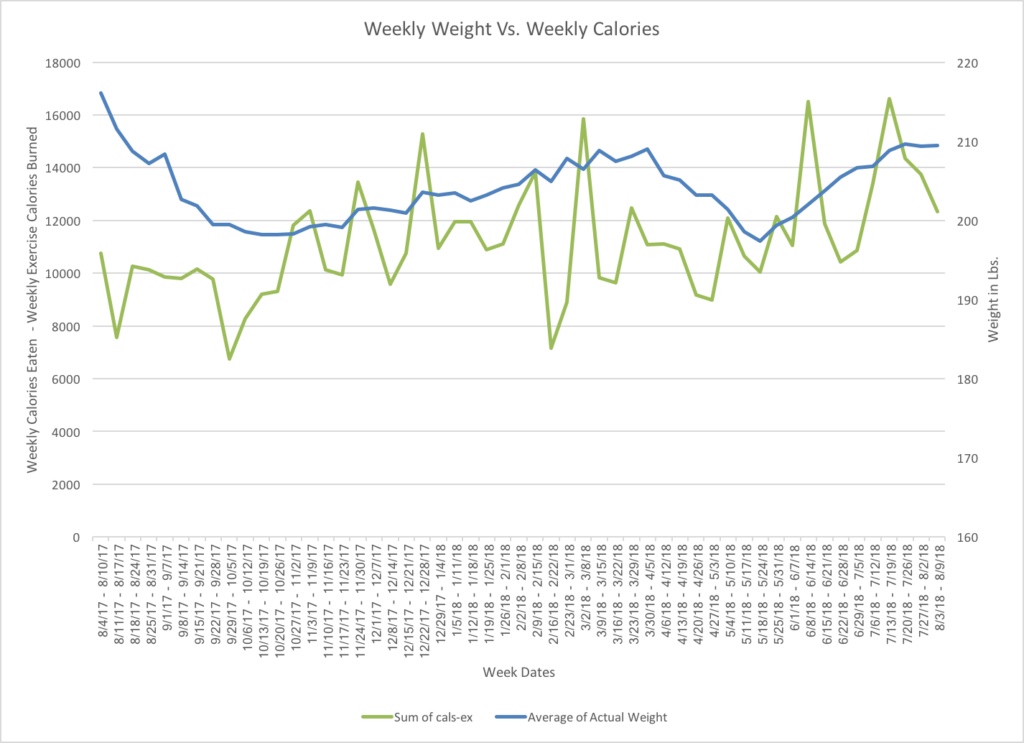
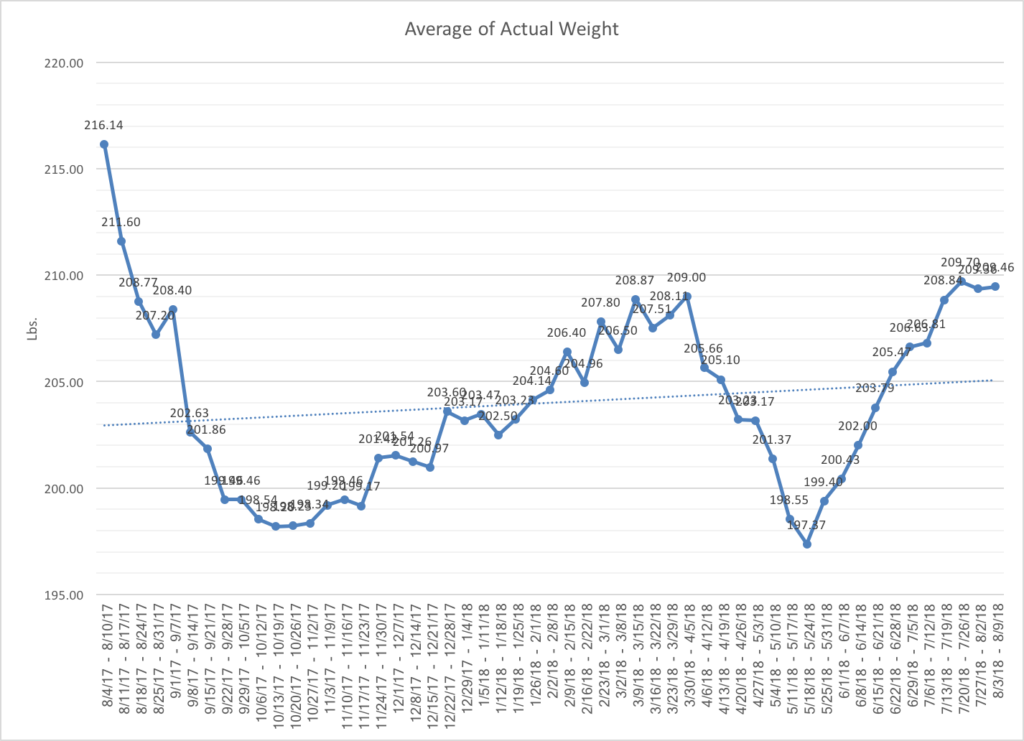
Reducing my body fat by 8%
Three inches off my waist and went from 26% to 18% body fat. (I measured my body fat percentage using three different methods and averaged them)
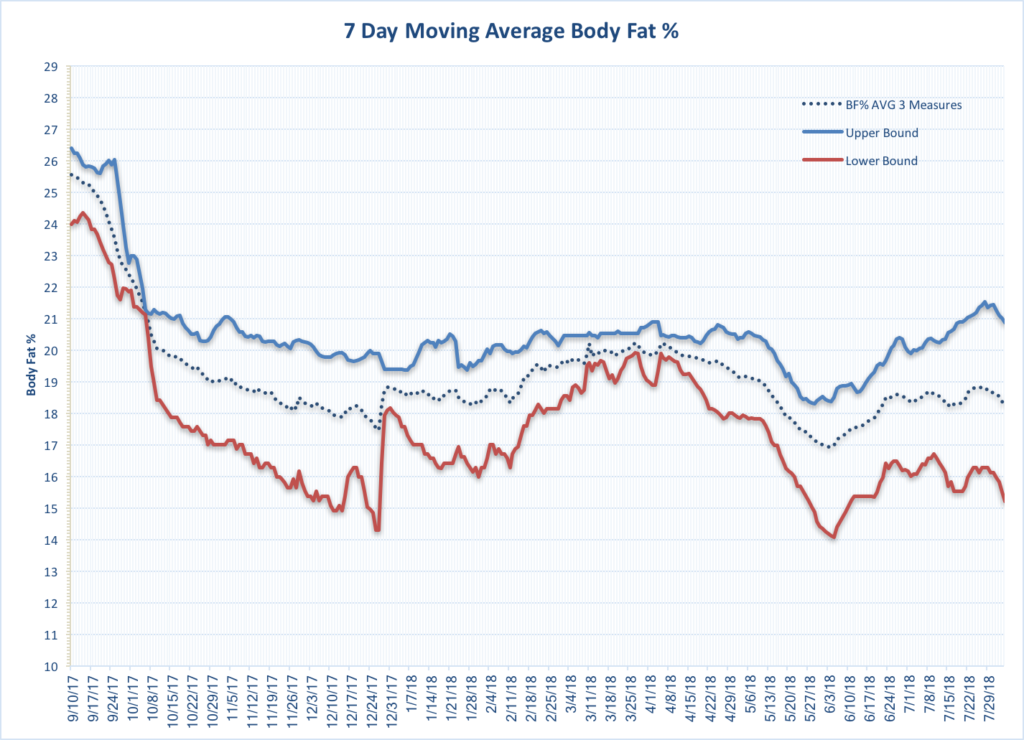
When you look at the weight components of fat and fat free mass the story becomes clearer. I used the body fat percentages to calculate the weight of the fat and fat free components of my body.
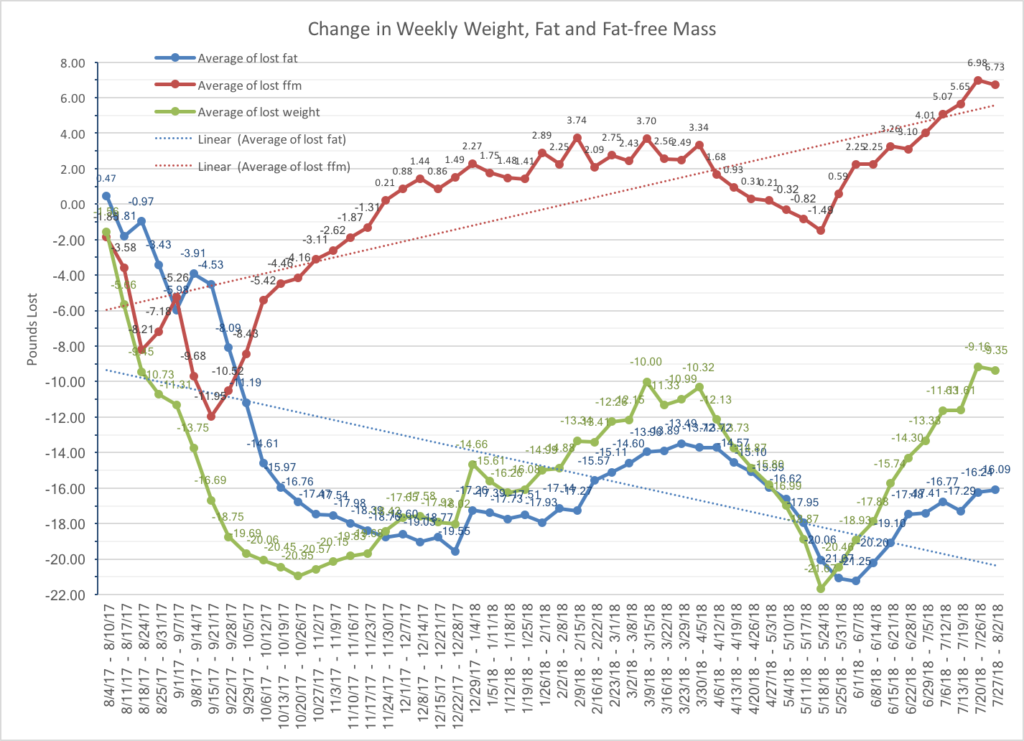
I was recomposing my body from fat to fat free mass (hopefully muscle). If you look at the strength gains over the same period, I think that the supposition that that additional mass was muscle seems very likely.
Weight loss predicted from Calories in to Calories Out did not follow what would be expected from metabolic energy expenditure calculations. The initial weight loss during the first 2 months was quite a bit more than would be explained by energy deficit. Whereas weight loss 6 months in was considerably less than what would be expected from tracking food consumption. I was scrupulous in tracking my food and exercise. I can’t help but think that my metabolism is considerably slower than the average. It’s not that easy to put on muscle and get fit after 50. If I adjust the coefficient from activity from the default of 1.2 for sedentary down to 1.05 then the predicted weight loss starts to track the actual more closely.
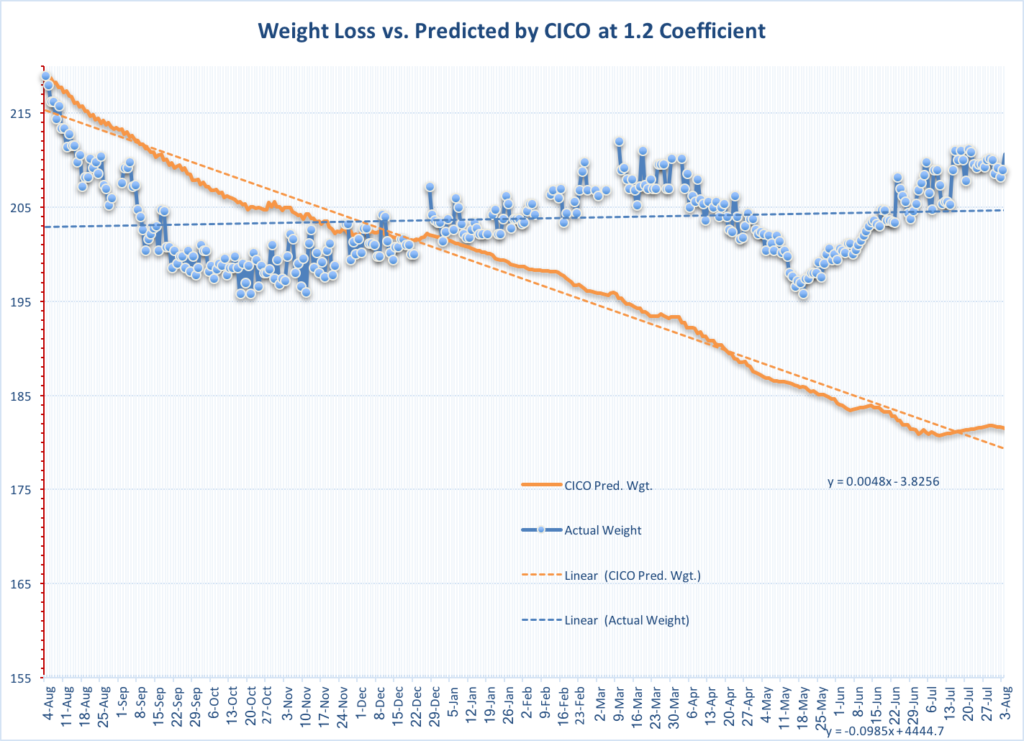
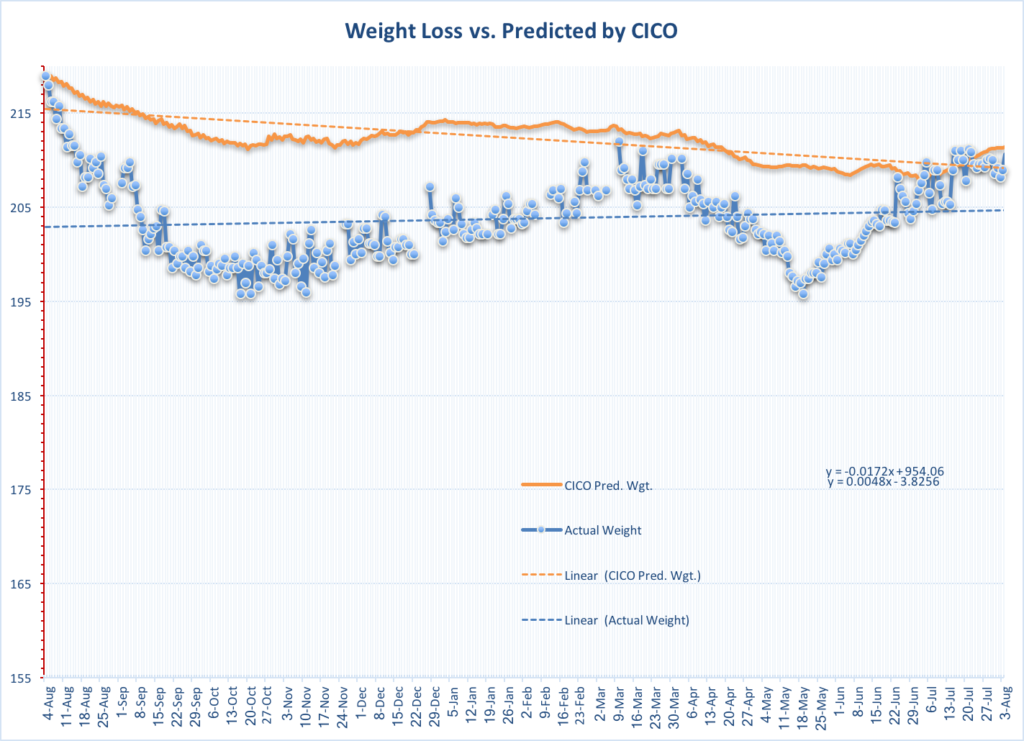
Still not that closely. If there weren’t large systematic errors in my tracking, it may be that intermittent fasting has an outsized effect on weight loss. Or it may be that the increase in conscientiousness when I was IF made my food intake estimates more accurate. Whereas when I was not restricting feeding times, I tended to underestimate the amount of food I was eating. Must do additional experiments to find out.
Fit after 50 with weightlifting
Weightlifting took on a much larger role than I had imagined. I started with a simple program that I found on reddit. The schedule was for three days a week and I thought I could make it at least twice a week for a whole year. I ended up working out 0 to 6 days a week depending on my schedule and my injury status. One little tweak in my back and I was out for a week.
What I didn’t know when I started was that my son and wife would join me. A couple of months in, my 14-year-old son and wife showed an interest and I added them to my account at the gym. This was a great motivator, but also a demotivator. When they were game to go to the gym, it made the whole thing a lot more enjoyable. When they declined, it made motivating myself to go that much harder.
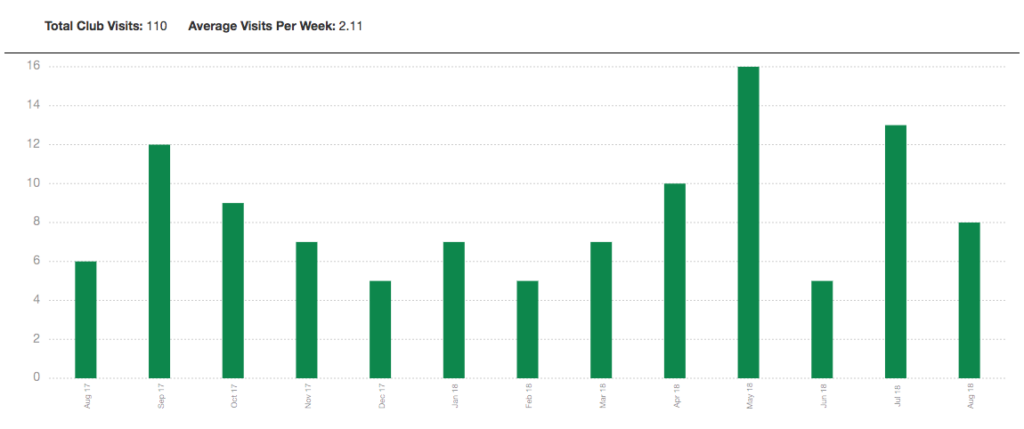
Still I made a lot of progress. I started my main lifts at very light weights, deadlift 95 lbs., bench-press 45 lbs. and squats 45 lbs. If you add up all three that’s 185 lbs. total. In a year, I have raised that up to 700 lbs. total and I am well on my way towards a significant milestone of 1000 lbs.
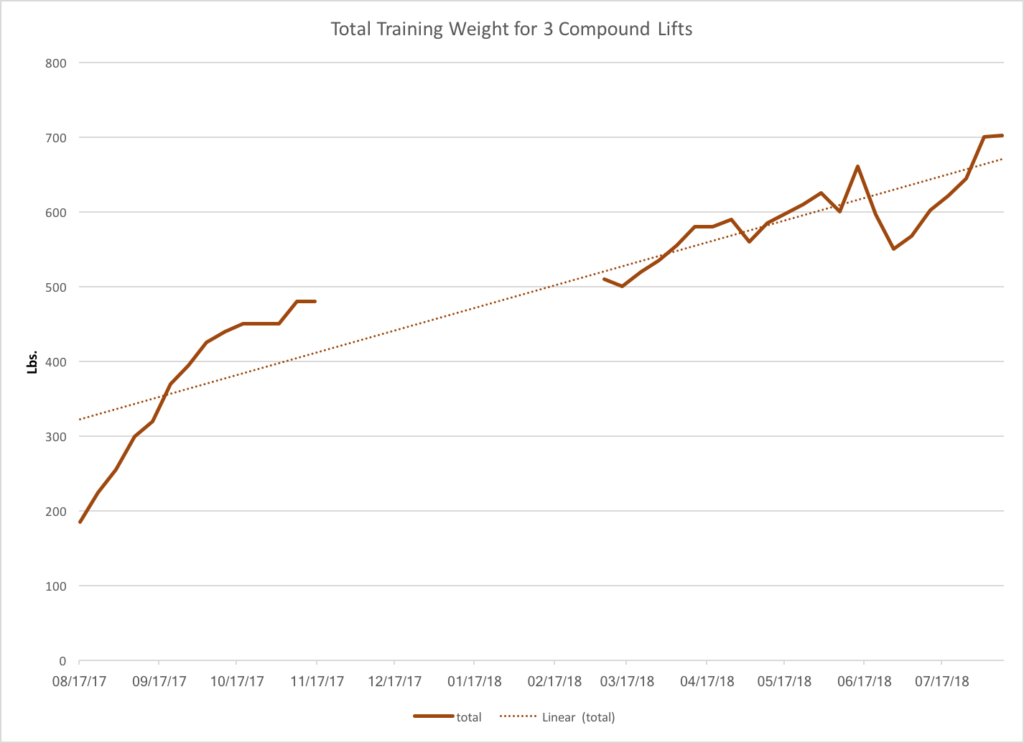
Next – fit after 51
From here, I am making a couple of adjustments to continue my progress. I signed up for some coaching on my lifts. My new coach at CrossFit SF is helping me with my form on deadlift and squat and teaching my more advanced skills in snatch and jerk. I’m going to continue to improve my nutrition through eating more protein and less simple carbs. I’m giving intermittent fasting or keto diet a rest. I figure that just by eating at maintenance and lifting heavy, I will continue to recompose my body from fat to muscle. My plan for the next year is to get my weight down to 190 and my body fat percentage to 14%. This seems very doable.
TL; DR
- Lost less weight than I planned, but put on 10 lbs. of muscle!
- Intermittent fasting can drop 20 lbs. quick, but is hard to maintain for more than a few months.
- Keto diet works, hard to maintain in a full house of normal eaters.
- CICO works. All diets are calorie deficit.
- Fiber works. Causes wild swings in weight and BIE readings.
- Weightlifting works. Gyms visits per week correlates with FFM increase.
- Running hurts my knees still.
